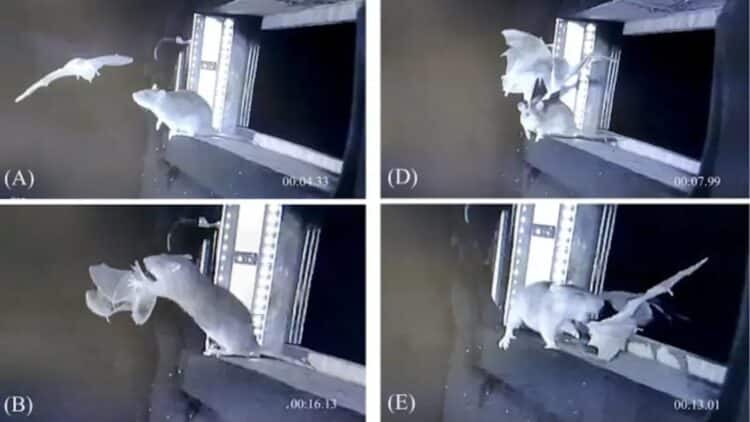The brown rat (Rattus norvegicus) has always been seen as a sewer or barn pest. No matter how cute we found the movie Ratatouille, rats—even if they are Parisian and know how to cook—are still a source of disease that caused one of the deadliest epidemics in human history: the Black Death.
They are surpassed in terms of diseases transmissible to humans only by another animal that is very similar to them, but has wings. Bats are another type of animal that is quite cute, but it is better to keep them away from human populations. Imagine the horror of scientists who have discovered a population of urban rats interacting with bats.
And they are not just coexisting, but hunting them. Yes, you read that right; there is now a species of rat that—for no apparent reason—has started hunting bats in mid-flight. Needless to say, epidemiologists around the world have been having trouble sleeping for a couple of weeks now.
The Crime Scene
The scene looks like something out of a low-budget horror movie, but it is what field researchers detected when they were installing infrared cameras in bat shelters to better study their behavior. We can imagine the astonishment these scientists from northern Germany felt when they saw on these “spy cameras” that their beloved bats had a new predator.
The study, published in the prestigious journal Global Ecology and Conservation by Florian Gloza-Rausch’s team, has set off alarm bells in the scientific community. This change in behavior in the invasive species (in this case, the brown rat) could trigger unpleasant consequences for European ecosystems and directly endanger global human health. If you take the two most dangerous animals with the most lethal communicable diseases for humans and put them together, the combination could end up like a volcano of baking soda and vinegar.
It all started when biologists began installing cameras in former gypsum mining sites known as hibernacula. They focused on Segeberger Kalkberg and Lüneburger Kalkberg in northern Germany, which serve as winter shelters for large colonies of bats of the genus Myotis.
That’s when they realized that rats had moved into the area… and they weren’t particularly friendly to the bats.
Rats hunting bats
The team observed two hunting strategies employed by brown rats: the most obvious was ground capture, as they went after bats that had already landed. What really astonished the scientists was that some rats chose to intercept their prey in flight: they positioned themselves strategically at the narrow entry and exit points of the shelter and stood upright on their hind legs and tails. They waited patiently and, at just the right moment, jumped with precision to catch them.
The study documented 30 hunting attempts, with 13 confirmed kills in a short period of time. This is a high success rate for such an unusual and novel form of predation. It is even more impressive when we consider that the brown rat is blind in total darkness. Just as bats locate themselves using echoes, brown rats are able to use their ultra-sensitive whiskers as biological radar. So much so that they use them to detect airflow and the tiny pressure fluctuations created by the flapping of a bat’s wings.
The Ecological Crisis
The million-dollar question is, why? It is not simply a lack of food, as rats are omnivorous and there is no shortage of easier-to-find food sources. Scientists suggest that this hunting is a combination of extreme opportunism and urban pressure: these abandoned quarries are all-you-can-eat buffets full of animals. This concentration of bats becomes a very succulent source of protein. At the Lüneburger Kalkberg shelter, although no direct events were recorded, researchers found the remains of more than 50 bats in a rat pantry.
Considering that bats are the main controllers of nocturnal insects, a drastic reduction in their population could create an imbalance that would lead to pests.

